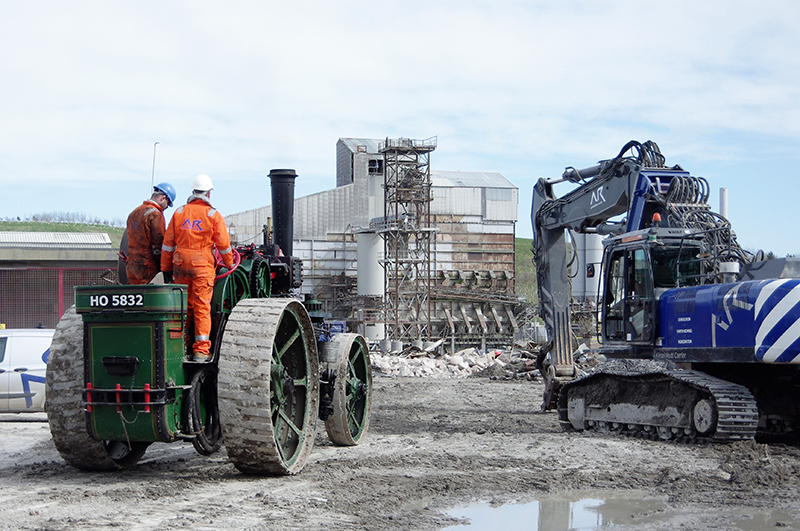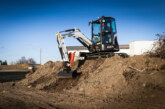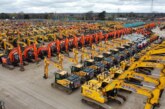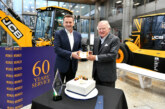
AR Demolition use a McLaren traction engine from 1918 at Croft Quarry in Leicestershire.
Demolition experts have used a 102-year-old steam traction engine to winch decommissioned infrastructure from the bottom of a quarry in Leicestershire.
Local specialists AR Demolition deployed the old 1918 J&H McLaren engine to remove sections of a conveyor belt from Croft Quarry.
Historical owners of the engine, named Avis, include the founder of the Courage Brewery and Sir William McAlpine, the son of Sir Robert who established his family’s construction firm in the 1860s.
Today Avis is owned by local enthusiast Robert Holt, from Hinckley in Leicestershire, whose son Richard is a fabricator at AR Demolition and operated the engine during its recent outing.
The unusual winching method was thought up by AR Demolition’s managing director Richard Dolman, who has been working on the Croft Quarry site for the past six weeks after being contracted to complete decommissioning demolition by site owners Aggregates Industies.
“We looked into winch hire,” he said, “but it was prohibitively expensive. And because of the nature of the site there was insufficient space to drag the pieces up the ramp from the bottom of the quarry using a long rope and demolition rig.
“I knew that Robert and Rich had Avis and it just occurred to me that she would be the perfect solution. It was a great opportunity for us to see what she could do and, as it turned out, she made it look easy.”
The removal of approximately 100 metres of conveyor belt housing – undertaken before the coronavirus lockdown – was done in sections over several hours, with the traction engine anchored at the top of the ramp.
The belt and housing was cut through with hot cutting torches to create sections – each weighing several tonnes – before being winched up the ramp and deconstructed using AR Demolition’s high-tech demolition rigs.
Richard Holt, who operated the engine, said: “Once she’s warmed up properly, she gets in this sweet spot where she’s a joy to work with.
“My dad and I, as well as Richard Dolman and AR Demolition’s co-owner Andrew Thompson, are passionate about old machinery like this. It’s beautifully constructed and if you maintain it properly there’s no reason why it can’t work as well as the day that it was made.
“Quarries are actually a great setting to use this type of technology, due to space restrictions, and it you’re working with competent people who are properly trained then it can all work really well.
“She’s quite slow on the road so it takes a while to get her home again, but it was definitely worth it for a job well done.”
AR Demolition, based in Carlton near Market Bosworth, is making a name for itself as being one of the UK’s most forward-thinking and innovative demolition contractors.
The company has invested in cutting-edge Kiesel machinery, while its sister firm AR Aggregates has also invested in two pieces of kit from German manufacturer Kleeman, in a joint bid to improve efficiency, economy and safety performance.
Despite the drive to introduce new techniques and standards into the industry, Mr Dolman said that he was open to looking backwards for new ideas, too.
“Thinking outside the box doesn’t just mean adopting new innovative technologies,” he said. “There are times when using a combination of the cutting-edge and the traditional can be just as effective.
“It’s a matter of picking the right machine for the job, not having a vested interest in choosing one or the other. Ultimately, what our clients want – and what makes business sense – is for work to be done as efficiently and, crucially, as safely as possible.
“So it’s been a delight to work with the Holt family and Avis on this job. Admittedly, it’s been fun too. But I definitely won’t rule out using her again, either at Croft Quarry or at any other site where the methods are appropriate.”








